Chapter 11 Technology, Productions, and Costs
1/65
There's no tags or description
Looks like no tags are added yet.
Name | Mastery | Learn | Test | Matching | Spaced |
|---|
No study sessions yet.
66 Terms
Technology
The processes a firm uses to turn inputs outputs of good and services
Technological change
A change in the ability of a firm to produce a given level of outputs with a given quantity of inputs
Short Run
the period of time during which at least one of a firms inputs is fixed
Long run
the period of time in which a firm can vary all of its inputs, adapt new technology, and increase or decrease the size of its physical plant
total cost
the cost of all its inputs a firm uses in production
Variable cost
Costs that change as output changes
Fixed costs
Costs that remain constant as output changes
Opportunity cost
The highest valued alternative that must be given up to engage in an activity
Explicit Cost
A cost that involves spending money
Implicit Cost
A non monetary opportunity cost
Production Function
The relationship between the inputs employed by a firm and the maximum output it can produce with those inputs
Average total cost
Total Cost divided by the quantity of output produced
Marginal product of labor
The additional output a firm produces as result of hiring one more worker
Law of diminishing returns
The principle that, at some point, adding more of a variable output, such as labor, to the same amount of fixed input, such as capital, will causes the marginal product of the variable input to decline
Average product of labor
The total output produced by a firm divided by the quantity of workers
Marginal cost
The change in a firm's total cost from producing one or more unit of a good or service
Average fixed cost
Fixed Cost divided by the quantity of output produced
Average variable cost
Variable cost divided by the quantity of output produced
Long- run average cost curve
A curve that shows the lowest cost at which a firm is able to produce a given quantity of output in the long run, when no inputs are fixed
Economies of scale
The situation when a firms long run average costs fall as it increase the quantity of output it produces
Constant returns to scale
The situation in which a firms long run average costs remains unchanged as it increases output
Minimum efficient scale
The level of output at which all economies of scale are exhausted
Dis economies of scale
The situation in which a firms long run average costs rise as the firm increases its output
Isoquant
A cure that shows all the combinations of two inputs, such as capital and labor, that will produce the same level of output
Marginal rate of technical subsitutions
The rate at which a firm is able to substitute one input for another while keeping the level of output the same
Isocost line
All the combinations of two inputs, such as capital and labor, that have the same total cost
a. more output to be produced from the same inputs; less output to be produced from same inputs
Fill in the blanks. A positive technological change causes_______ , while a negative technological
change causes _______.
a. more output to be produced from the same inputs; less output to be produced from same inputs
b. less output to be produced from the same inputs; more output to be produced from same inputs
c. the same level of output to be produced from the same inputs more output to be produced from
same inputs
d. None of the above occurs.
b. where at least one input is fixed; where all inputs are variable
Fill in the blanks. The short run is a period of time _______, while the long run is s period of time
_______.
a. where at least one input is fixed; where all inputs are fixed
b. where at least one input is fixed; where all inputs are variable
c. where all inputs are variable; where at least one input is fixed
d. None of the above is true.
a. the relationship between the inputs used by the firm and the maximum output it can produce.
3. The production function shows
a. the relationship between the inputs used by the firm and the maximum output it can produce.
b. the relationship between the variable inputs and the cost of production.
c. the relationship between the fined inputs and the cost of production.
d. none of the above
c. stays the same regardless of the level of output.
4. Total fixed cost
a. increases as output increases.
b. decreases as output increases.
c. stays the same regardless of the level of output.
d. None of the above is true.
a. They are part of fixed cost.
If the number of people in a publishing company does not go up or down with the quantity of books itpublishes, then how should we categorize the salaries and benefits paid to these employees?
a. They are part of fixed cost.
b. They are part of variable cost.
c. They are an implicit cost.
d. They are not considered a part of the cost of production
a. opportunity cost
6. Which of the following is known as the highest-valued alternative that must be given up in order to engage in an activity?
a. opportunity cost
b. explicit cost
c. total cost
d. variable cost
a. the forgone salary and interest
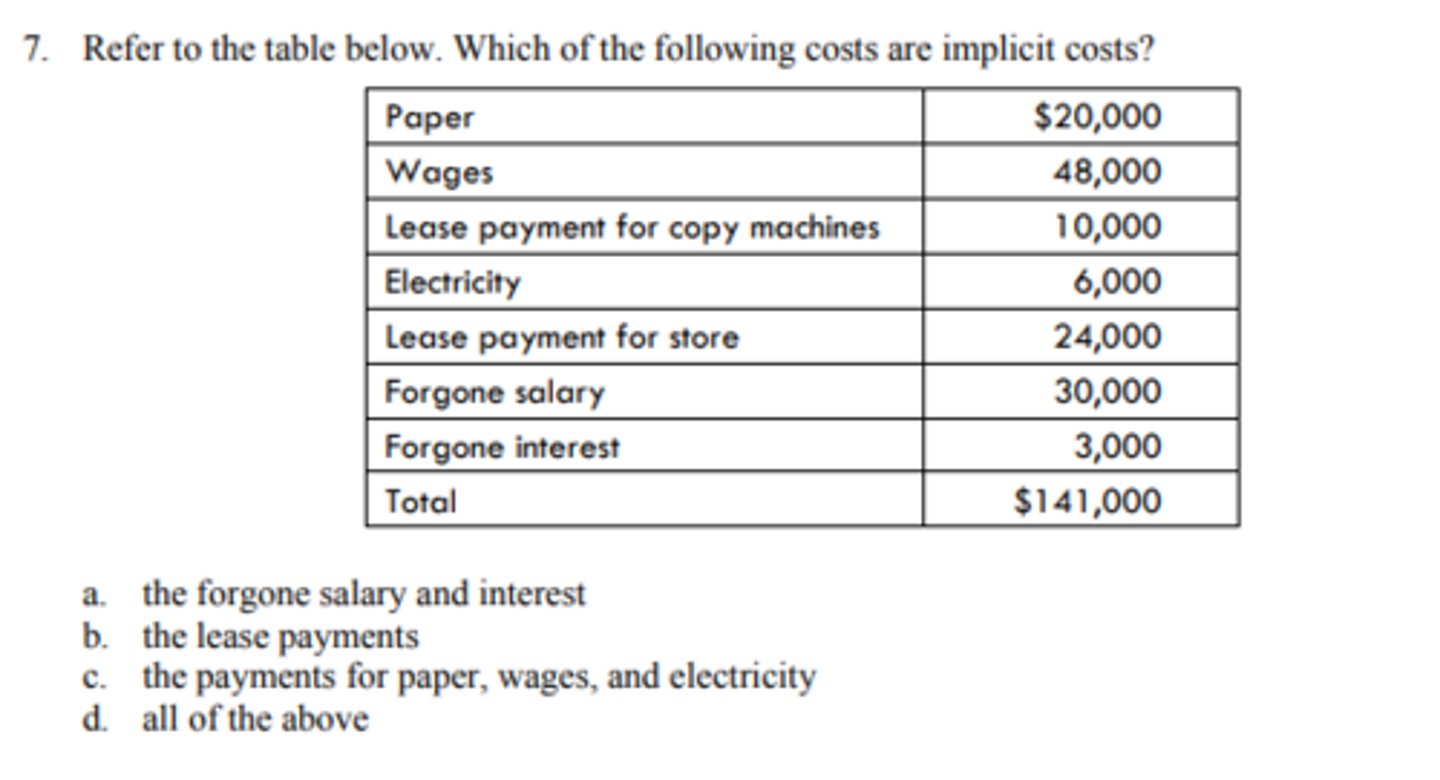
a. total variable cost divided by the level of output produced.
8. Average variable cost is
a. total variable cost divided by the level of output produced.
b. total cost divided by the level of output produced.
c. total fixed cost divided by the level of output produced.
d. None of the above.
b. in the short run.
9. The law of diminishing returns applies
a. in the long run.
b. in the short run.
c. either in the short run or the long run.
d. none of the above.
b. must be below the average variable cost curve.
10. When average variable cost curve is decreasing, marginal cost curve
a. must be above the average variable cost curve.
b. must be below the average variable cost curve.
c. can be above or below the average variable cost curve.
d. None of the above is true.
b. B
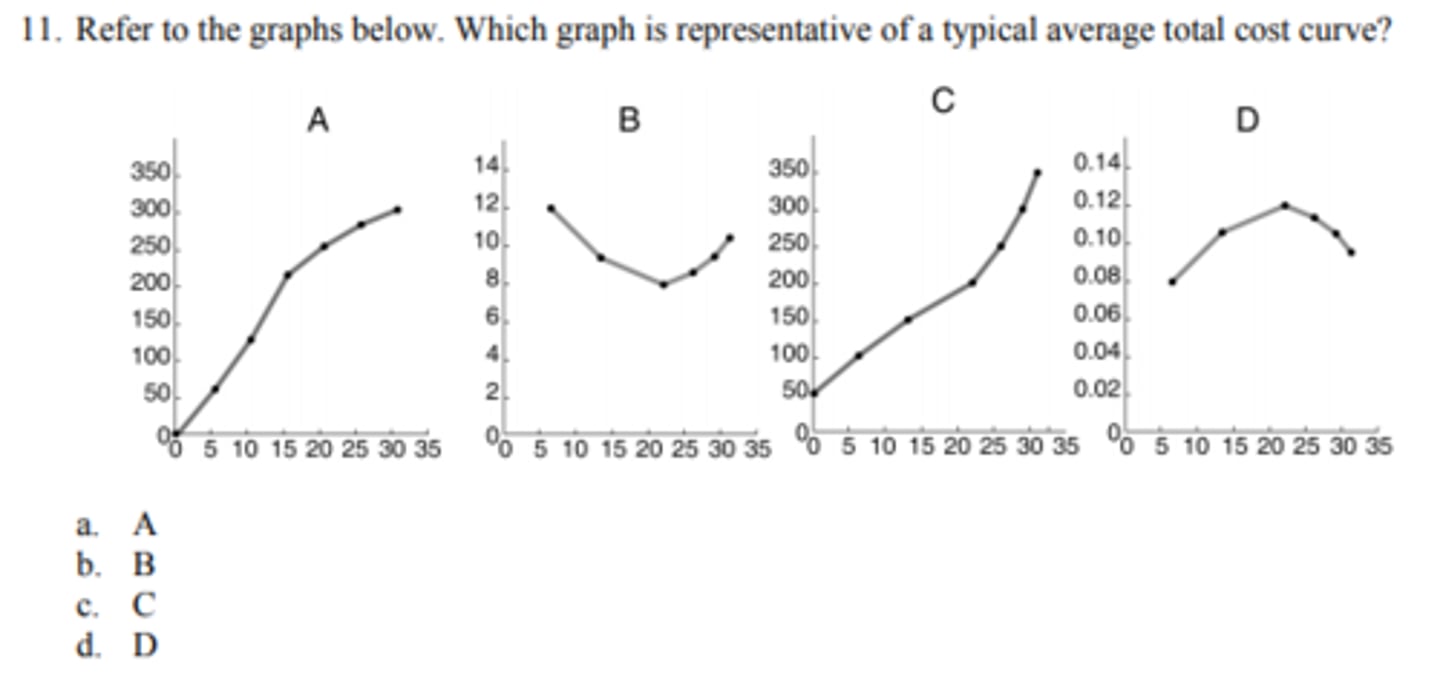
d. i, ii, and iii
12. Which of the following is true?
i. Total cost = fixed cost + variable cost
ii. Total cost = explicit costs + implicit costs
iii. Economic cost = accounting cost + implicit costs
a. i only
b. ii only
c. i and ii only
d. i, ii, and iii
a. the lowest cost of producing any level of output.
13. A long-run average cost curve has
a. the lowest cost of producing any level of output.
b. the highest cost of producing any level of output.
c. an inverted U-shape.
d. none of the above.
b. when the third worker is hired
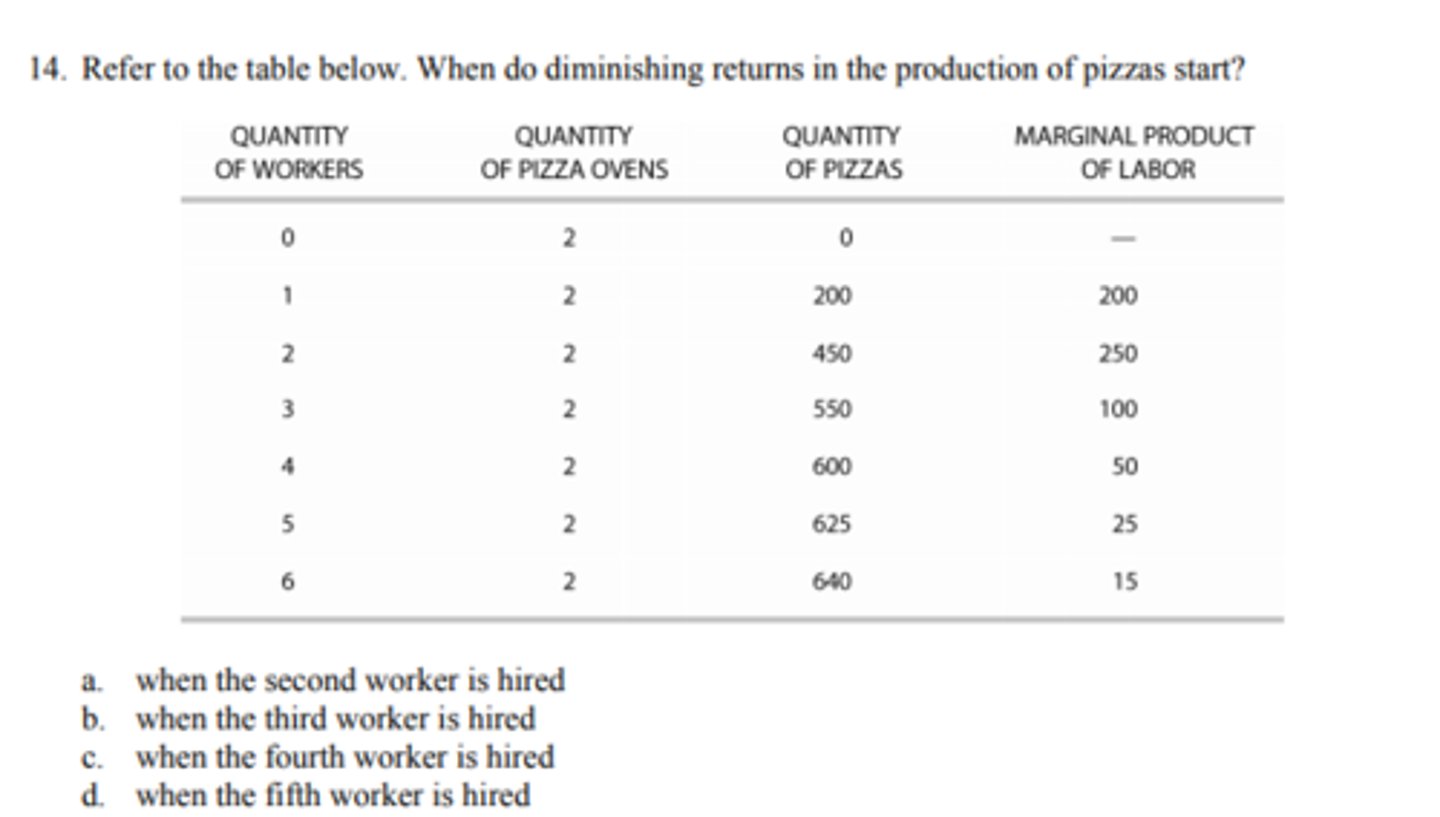
b. diminishing returns
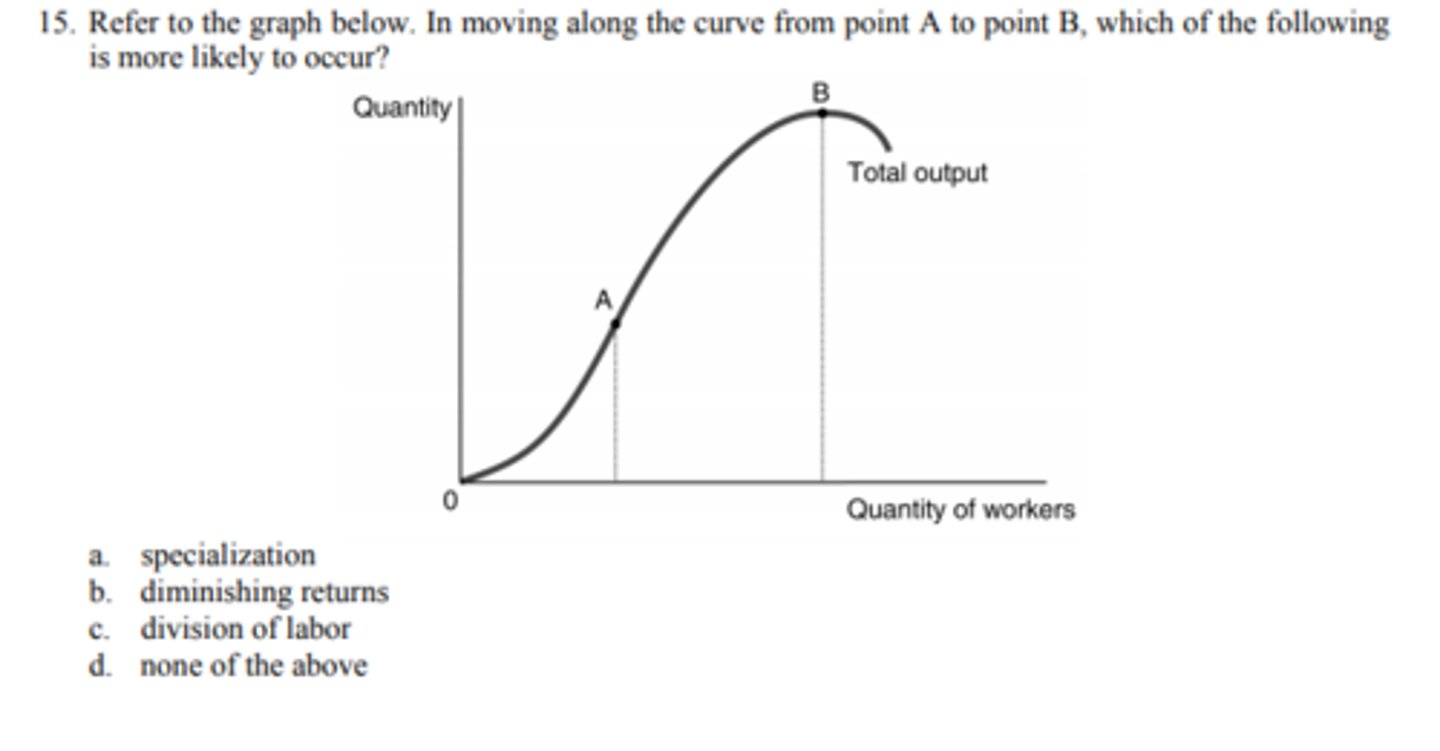
a. output increases at an increasing rate.

b. the downward sloping part of the long run average cost curve; the upward sloping part of the long run average cost curve
17. Fill in the blanks. Economies of scale are represented by_______, while diseconomies of scale are
represented by _______.
a. the upward sloping part of the long run average cost curve; the downward sloping part of the long
run average cost curve
b. the downward sloping part of the long run average cost curve; the upward sloping part of the long run average cost curve
c. the upward sloping part of the long run average cost curve; the upward sloping part of the long
run average cost curve
d. the downward sloping part of the long run average cost curve; the downward sloping part of the
long run average cost curve
c. constant; total fixed cost
18. Fill in the blanks. The vertical distance between the total cost and the total variable cost curves is
_______ and reflects _______.
a. variable; total fixed cost
b. constant; marginal cost
c. constant; total fixed cost
d. None of the above is true.
b. Curve 2
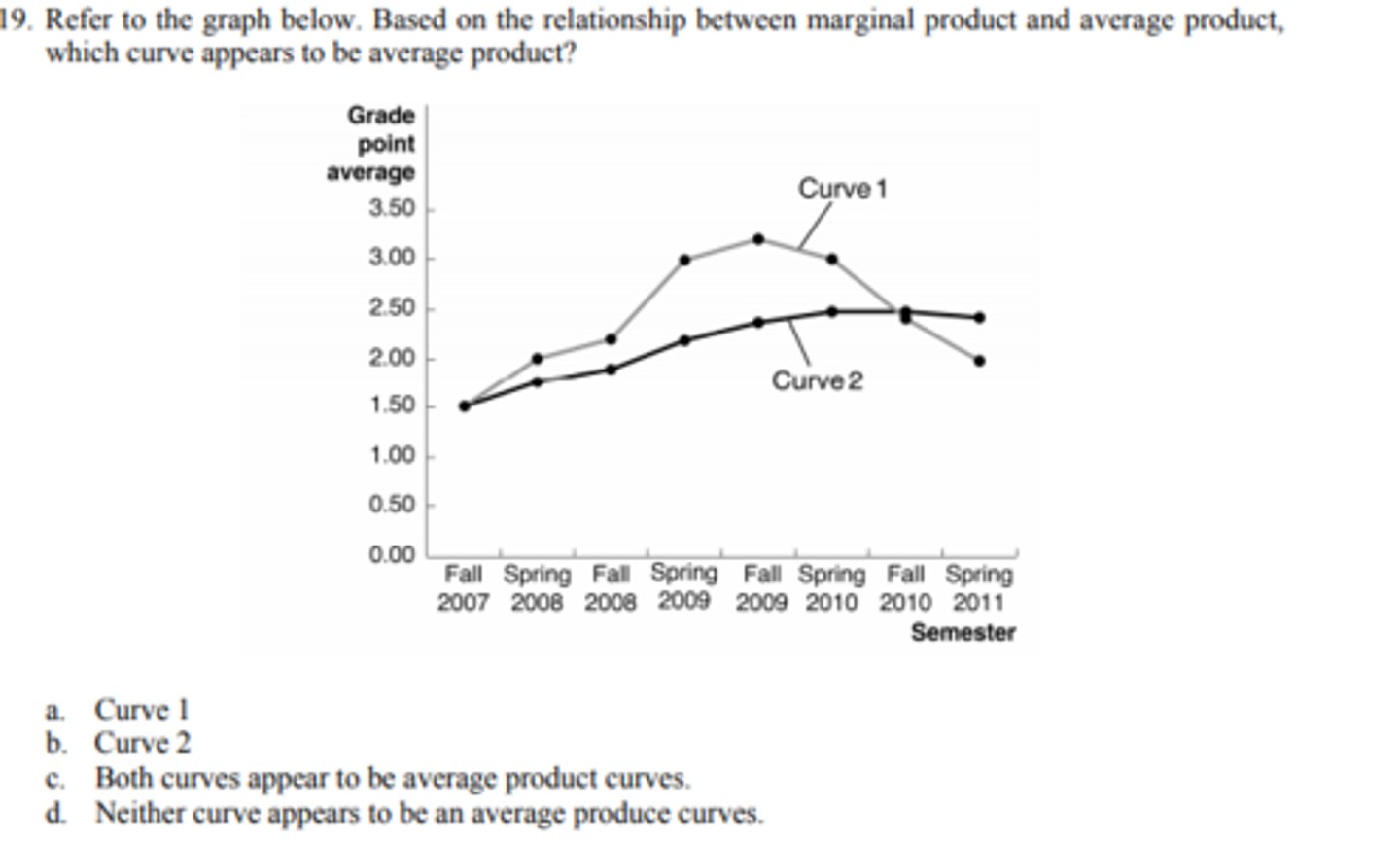
c. $3.25
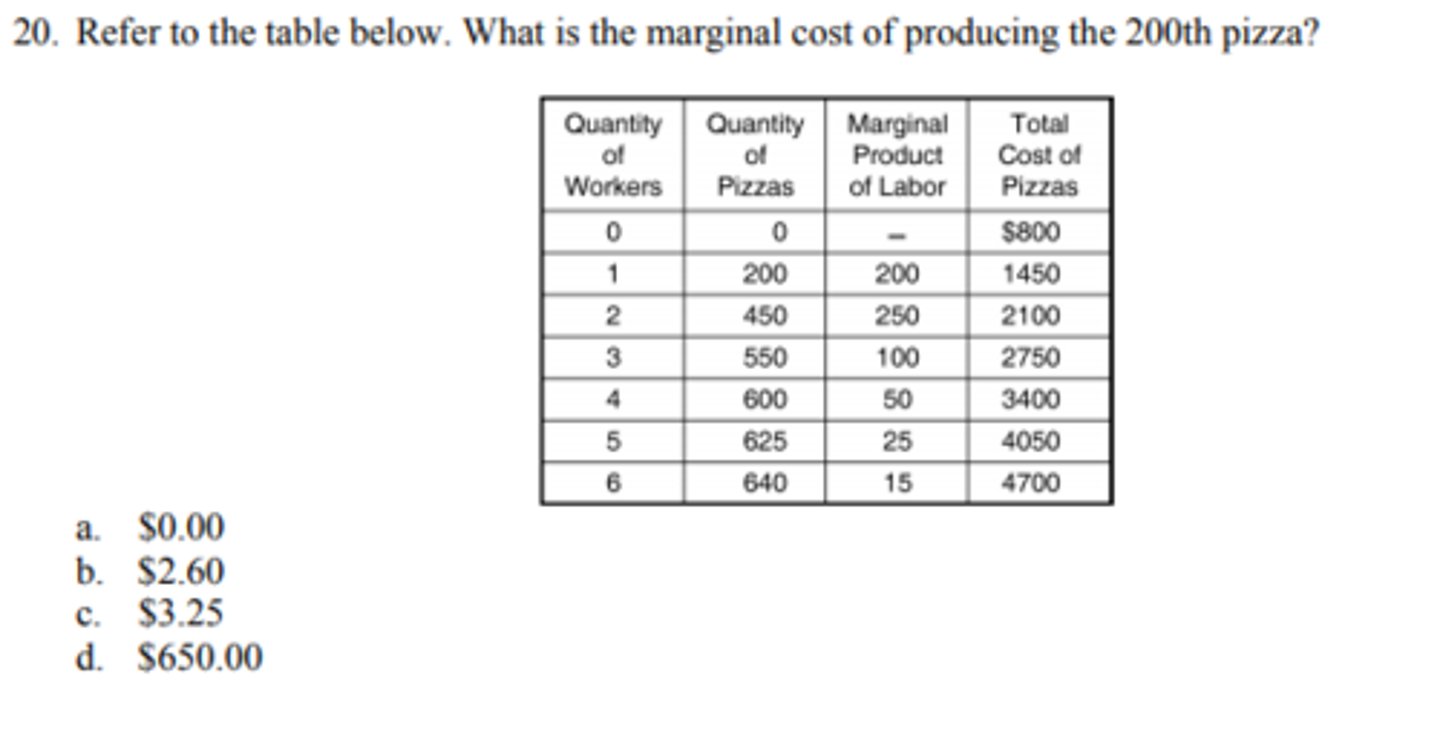
b. Curve 2
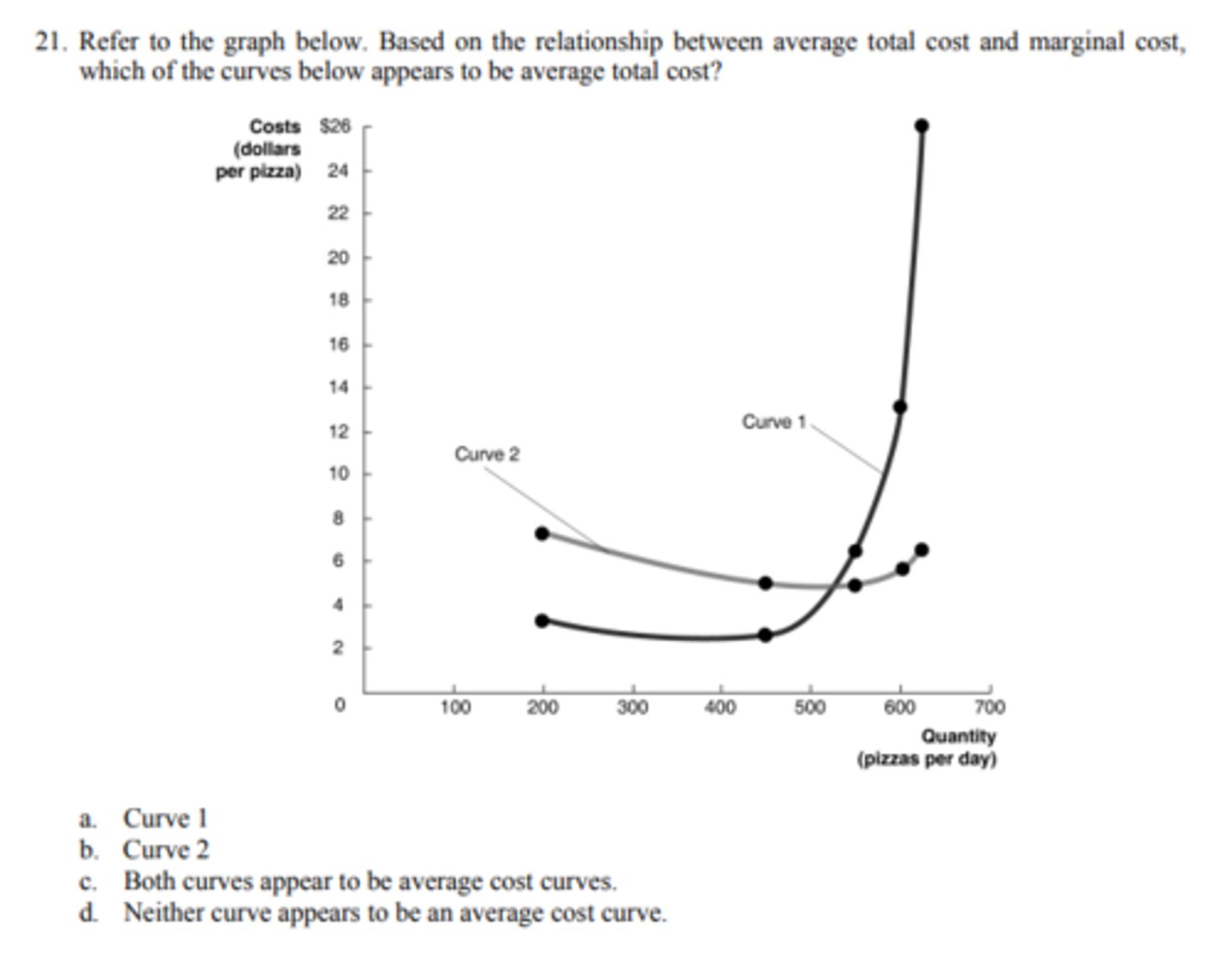
b. the output range greater than about 525 pizzas per day
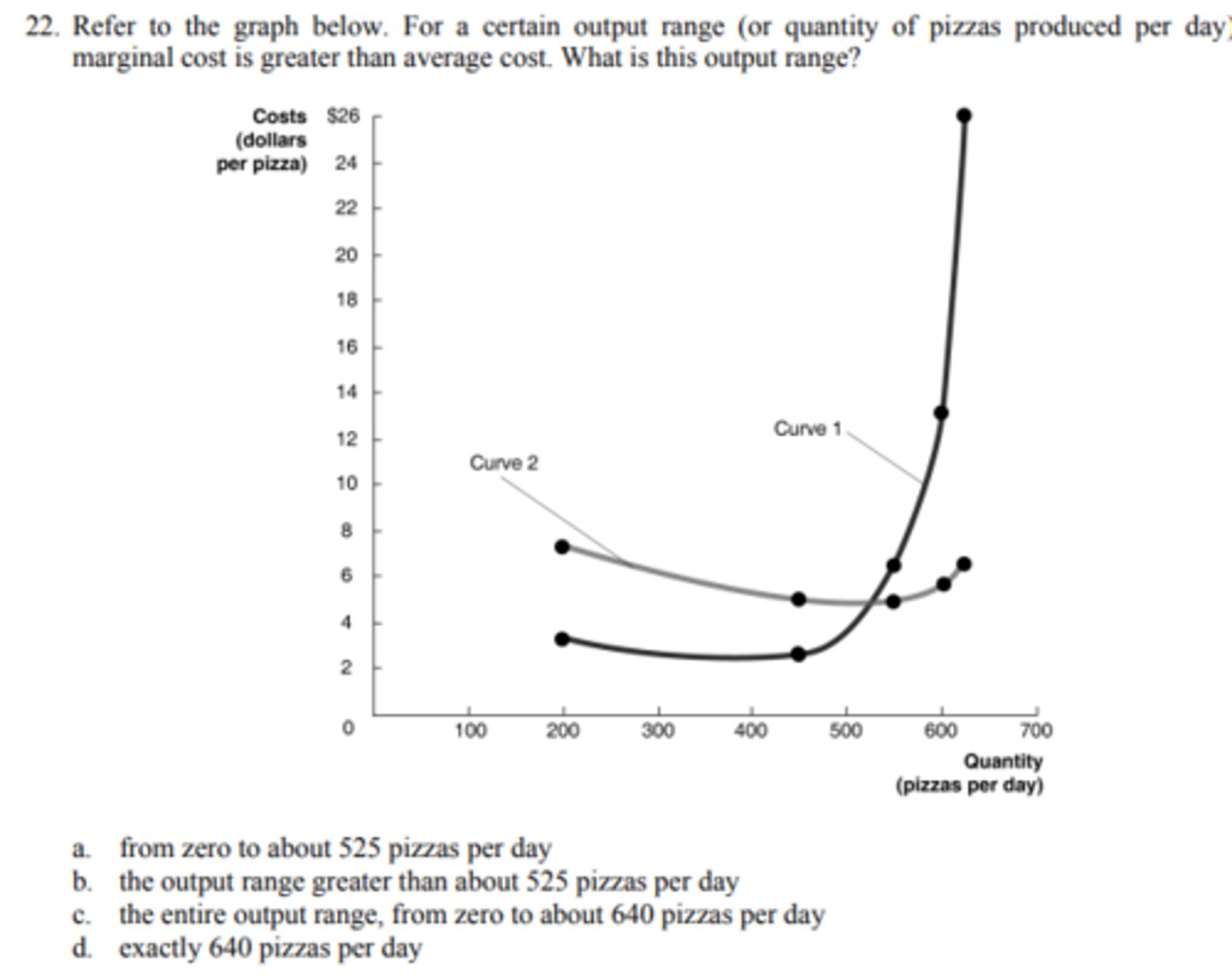
b. decreasing.
23. When marginal cost is less than average total cost, average total cost must be
a. increasing.
b. decreasing.
c. constant.
d. None of the above.
c. marginal product of labor is greater than average product of labor.
24. When average product of labor is increasing,
a. marginal product of labor equals average product of labor.
b. marginal product of labor is less than average product of labor.
c. marginal product of labor is greater than average product of labor.
d. None of the above is true.
c. average fixed cost

b. Curve 4

c. average fixed cost
27. The following cost measures reach their minimum points when they are equal to the value of marginal cost, except one. Which cost measure is the exception?
a. average variable cost
b. average total cost
c. average fixed cost
d. There is no exception; all three measures above reach their minimum values when they are equal
to the value of marginal cost.
a. the rate at which firms are able to substitute one input for another while keeping the level of output constant.
28. Marginal rate of technical substitution is
a. the rate at which firms are able to substitute one input for another while keeping the level of output constant.
b. the rate at which firms are able to substitute one input for another while increasing the level of
output constant.
c. the rate at which firms are able to substitute one input for another while decreasing the level of
output constant.
d. none of the above
a. $2,400
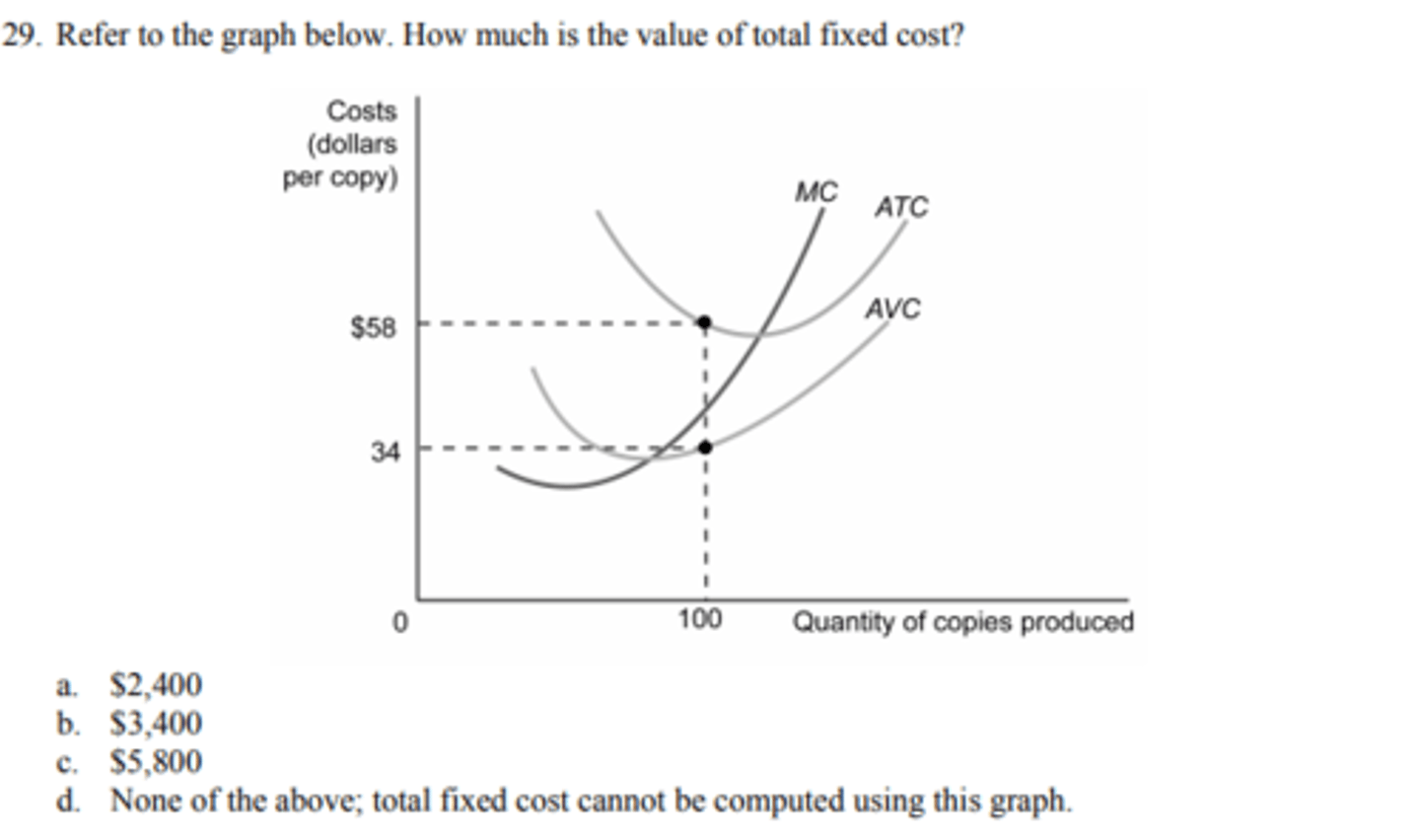
a. $43.33

a. $5.00

b. The difference decreases.
32. What happens to the difference between average variable cost and average total cost as the level of
output increases?
a. The difference increases.
b. The difference decreases.
c. The difference remains the same.
d. The difference first increases then decreases.
c. smaller; average fixed cost
33. Fill in the blanks. As output increases, the vertical distance between average total cost and average
variable cost curves gets _______ and equals _______.
a. smaller; total fixed cost
b. larger; average fixed cost
c. smaller; average fixed cost
d. larger; marginal cost
b. the long-run average cost curve
34. Which of the following terms refers to the lowest cost at which a firm is able to produce a given level of output in the long run, when no inputs are fixed?
a. the long-run marginal cost curve
b. the long-run average cost curve
c. the variable inputs curve
d. economies of scale
c. Both (a) and (b) are correct.
35. Economies of scale
a. happens when the firm's long-run average total cost decreases as output increases.
b. is represented by the downward-sloping part of the long-run average cost curve.
c. Both (a) and (b) are correct.
d. None of the above is correct.
a. the move from 1,000 to 20,000 books sold per month
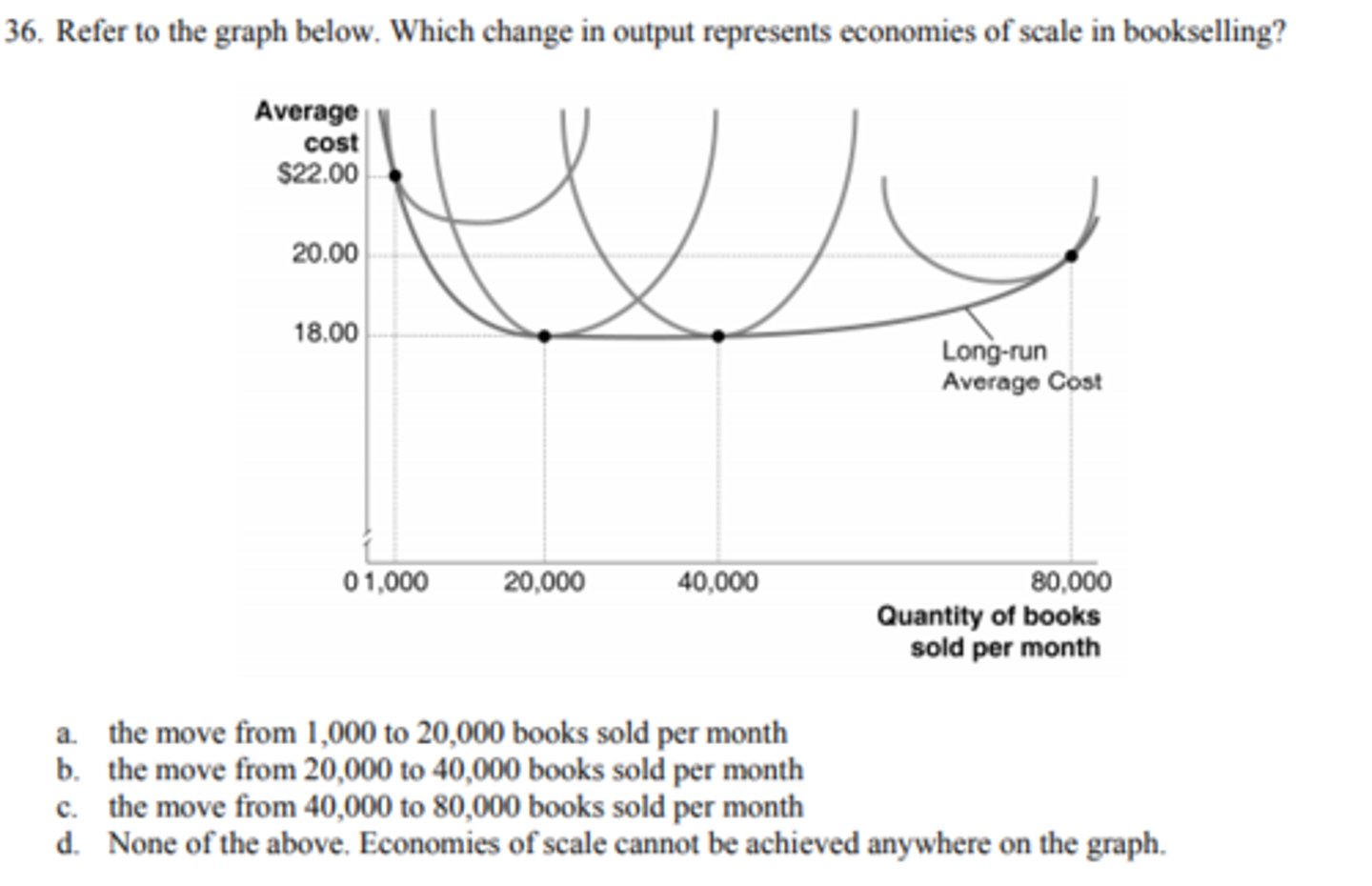
b. 20,000 books
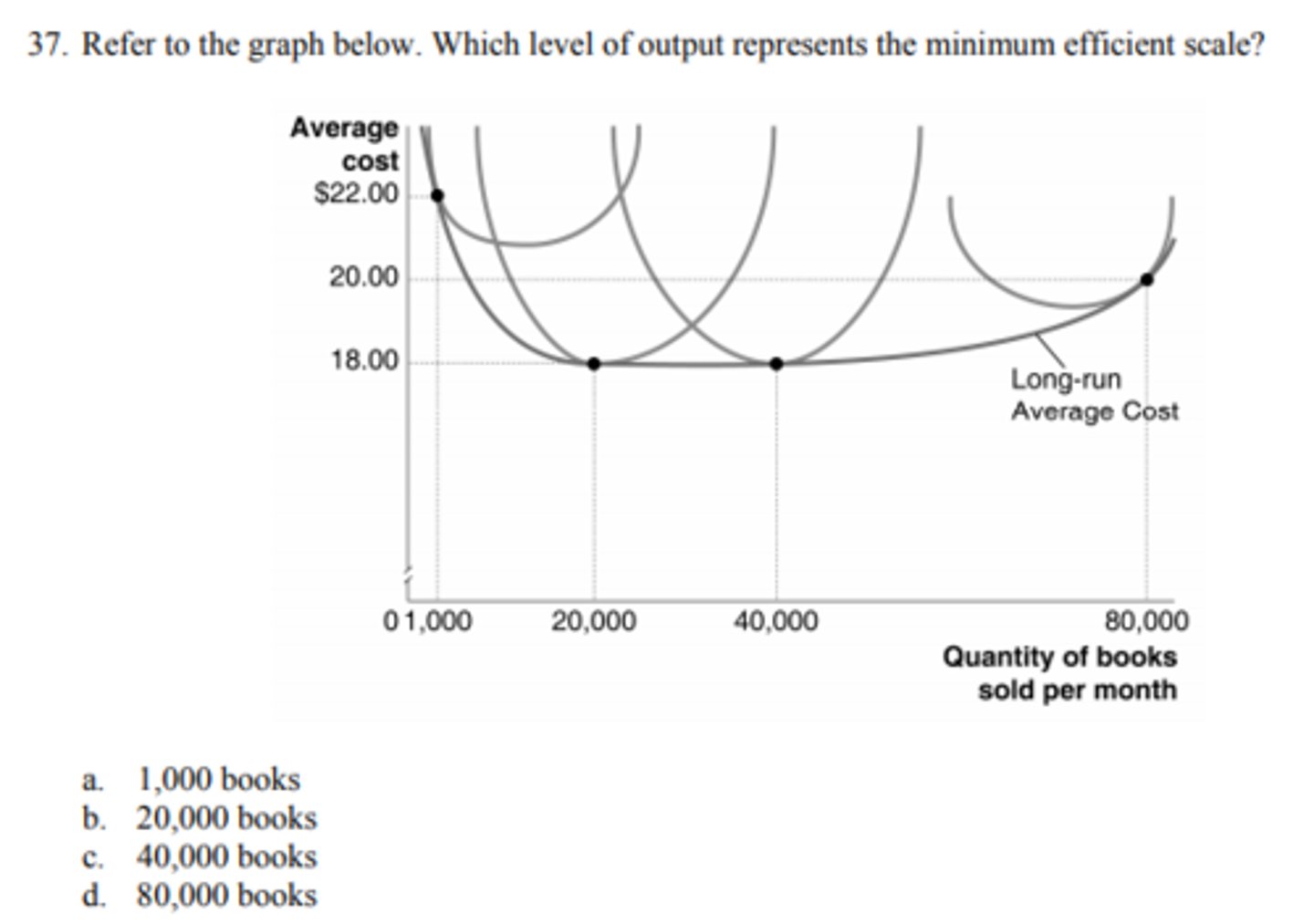
c. between 20,000 and 40,000 books
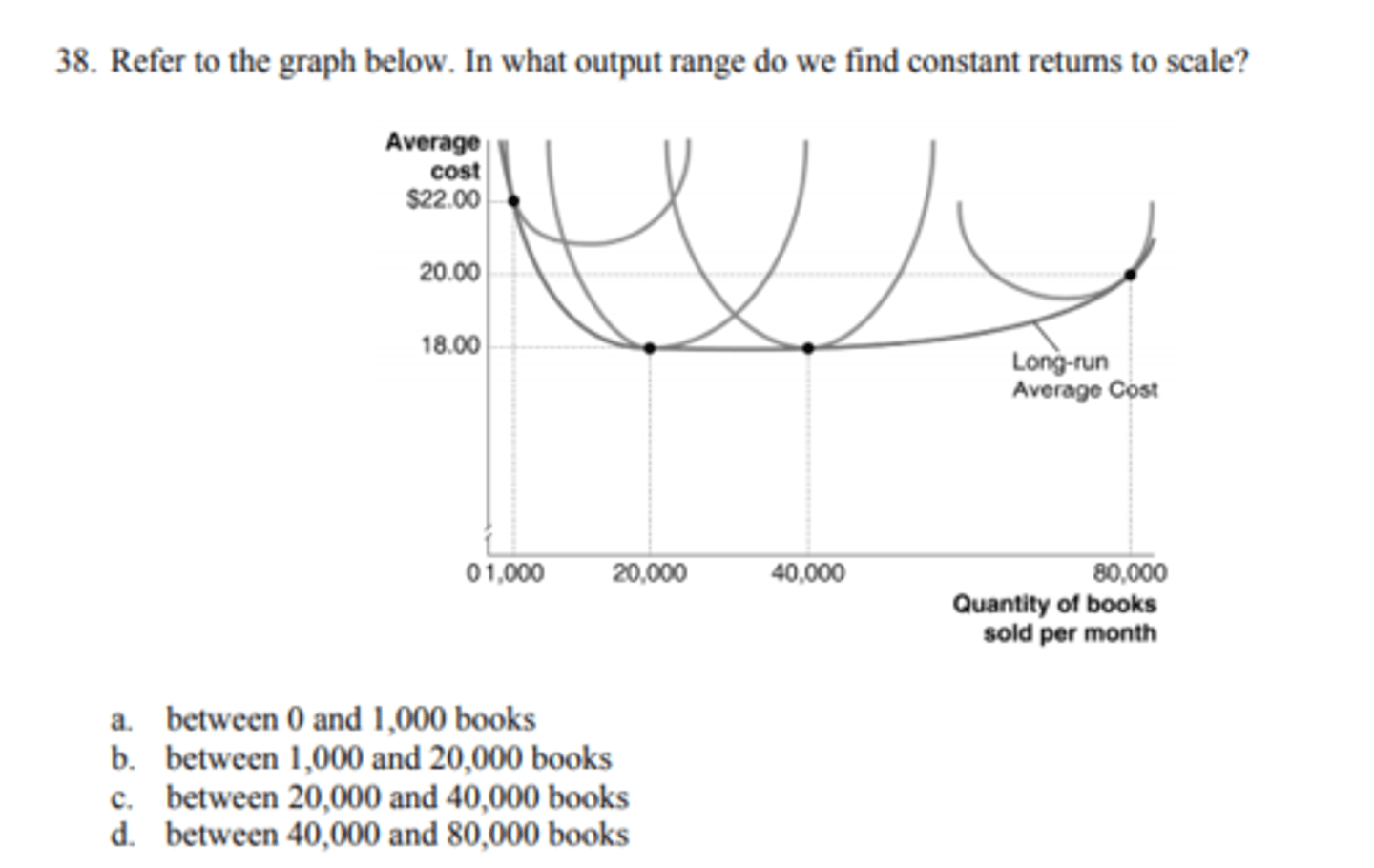
d. a bookstore selling 80,000 books per month
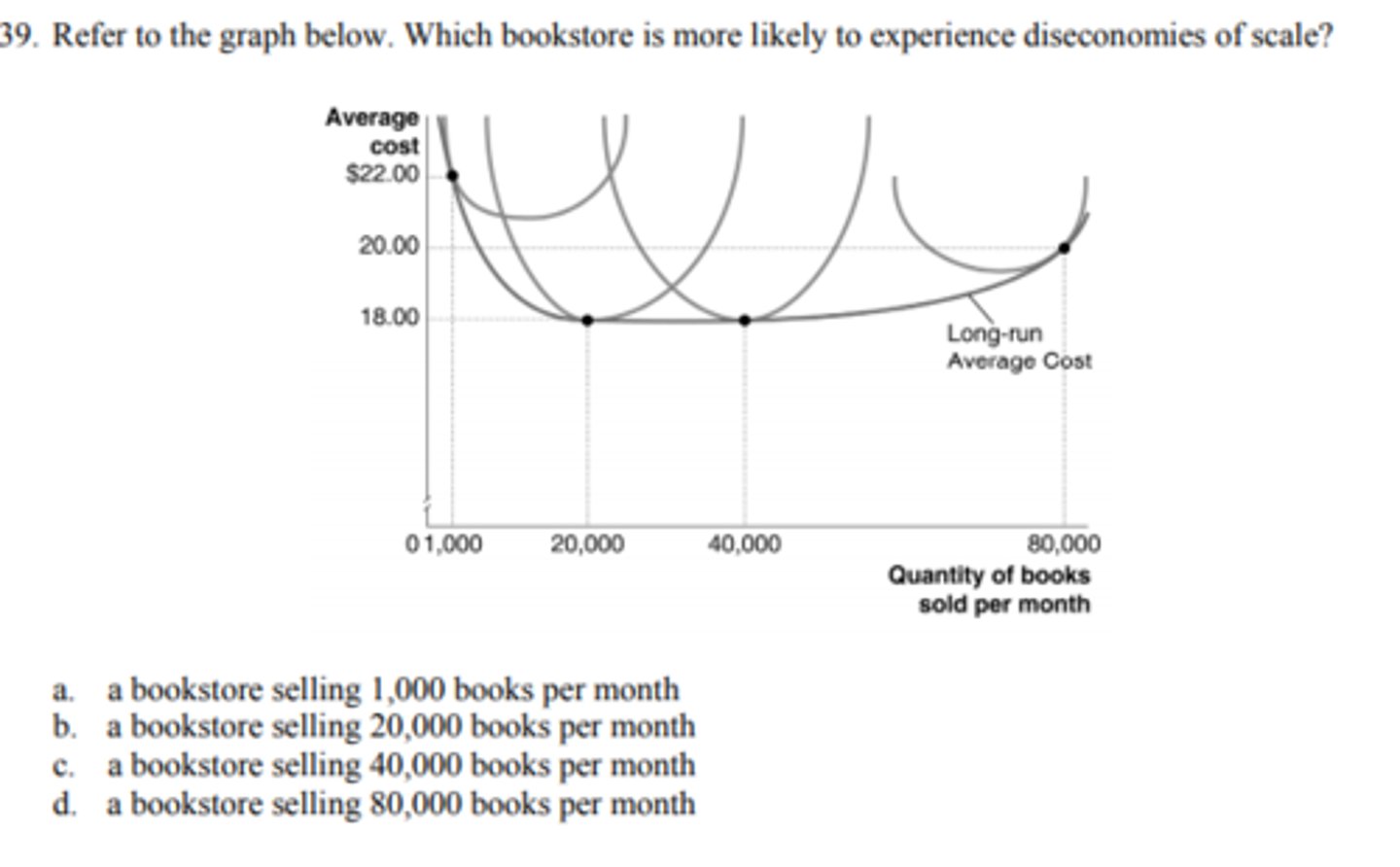
b. all economies of scale are exhausted.
40. Minimum efficient scale is the level of output at which
a. the firm has diseconomies of scale.
b. all economies of scale are exhausted.
c. the average cost is at its highest level.
d. None of the above is true.